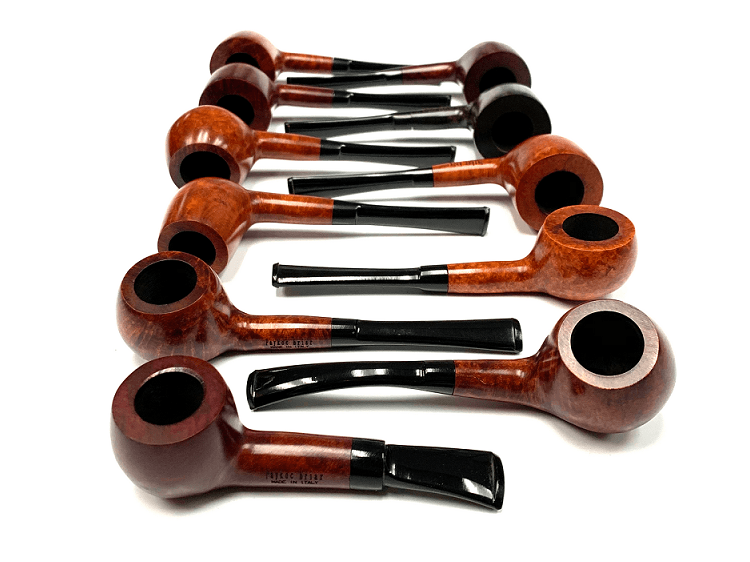
High-end personalized briar pipes come in many shapes and forms. In this article, Paykoc Pipes' tobacco pipe sellers explore everything you need to know about briar pipes. Read on for an overview of briar pipe mouthpiece types, different briar pipe finishes, and tips to help you maximize your briar pipe smoking experience.
How Are Briar Pipes Made?
Briar pipes are made from root burls of the white heath tree. “Tree” is probably being a bit generous when it comes to the White Heath because they’re far more like gnarly little bushes than trees, but their root system nonetheless provides the perfect source material for briar pipes: durable, porous, and heat-resistant.
The harvested burls are cut and trimmed down to their solid briar root core which is fashioned into smoking pipes. After boiling out the sap and resin the briar wood is left to dry for up to two years; a process that is essential to producing a pipe that will smoke dry and cool.
Popular Briar Pipe Finishes
Every tobacco pipe enthusiast has their own favorite finish. Some love the rough, gnarly feel achieved by sandblasting, while others want something smooth and lustrous. Many pipe smokers love contrasting grain coloration while others can’t abide a pipe without a rusticated surface. So which briar pipe finish is best? And does the type of finish you choose impact the smoking experience in any significant way?
The stunning variety of looks available for briar pipes lead some to believe there are hundreds of techniques being used to achieve them. Actually, it’s the skill of the pipe finishers that makes it seems like each different look is the result of a different process. Here are a few of the most popular finishes for briar pipes.
Contrasting Grain Finish
Contrasting grain finishes might look like they’re easy to achieve but you’d better believe they are not. Pipe finishers' collective dedication to their craft makes it appear that the two-tone grain is a natural effect, as if all the finisher did was sand things down a bit and apply a hard wax coating. In reality, the finish is the result of two separate stains applied with meticulous care that bring out the light and dark features of the briar. It’s like bumping up the contrast in a photo processing software application, except that learning how to draw out the innate contrast in briarwood is a skill that can take years to master.
Rusticated Finish
The process of adding a unique texture to briar pipes is called rustication. Briar pipes that may not easily lend themselves to a smooth finish are often chosen for rustication and that’s just fine for the legions of pipe enthusiasts worldwide who clamor for the look. Rustication itself is a single process of introducing texture, but there are as many ways to introduce that texture as there are pipe makers. Most rustication tools are proprietary; that is they are custom-made by the individual pipe maker. A single pipe maker may have dozens of different tools they use to achieve different surface effects. As a result, each pipe is a unique work of art as much as it is an instrument for enjoying fine tobacco.
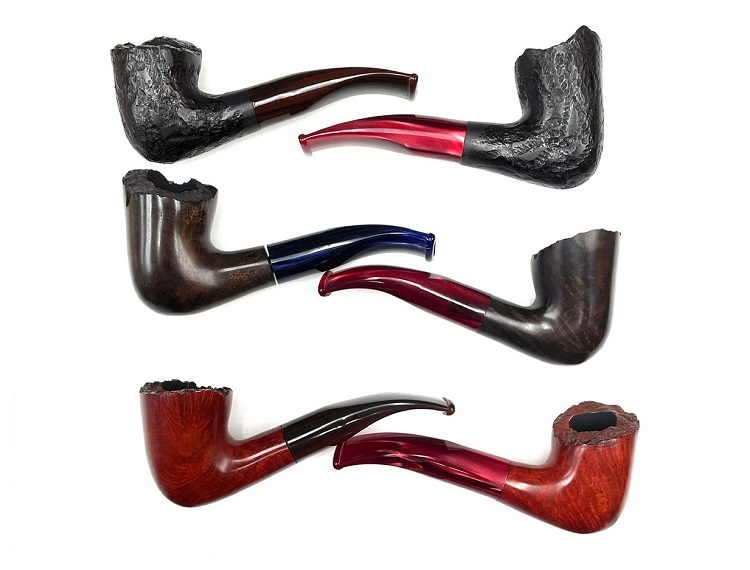
Sandblasted Finish
Sandblasting is the process of firing sand, glass, or some other type of abrasive material at the briar under intense pressure to strip away the soft wood. What’s left behind are craggy ridges of hardwood that present a texture many find very appealing. Also, by creating all those gnarly ridges, peaks, and valleys the exterior surface of the pipe is actually increased. Increased surface means increased heat dissipation and somewhat cooler smoke. Sandblasted pipes are very popular and as a result, just about every manufacturer offers several variations on the theme.
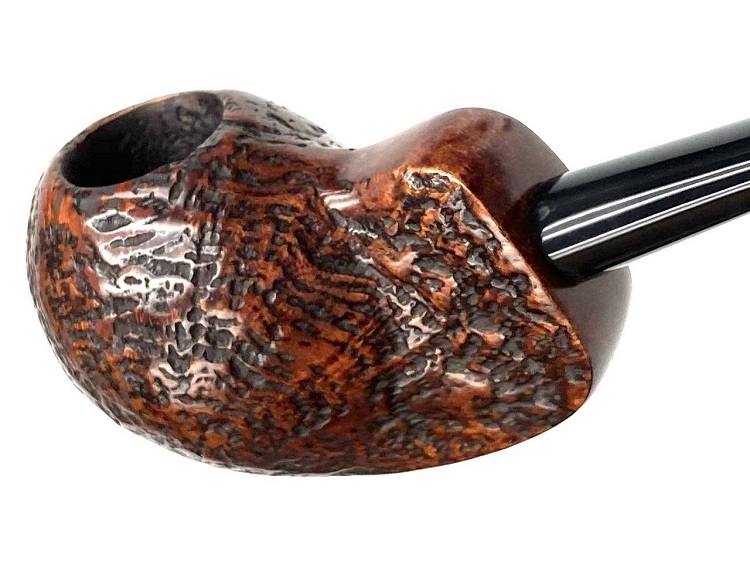
Smooth Finish
Many pipe enthusiasts love the look and feel of a flawlessly smooth high-gloss finish. This type of finish has an air of easy sophistication about it that makes it the right choice whether you’re watching TV after dinner, pouring over proposals in the office, or taking the boat out for a leisurely Sunday sail. The finish is arrived at by sanding the briar with increasingly finer grades of sandpaper. Once a silky smooth surface is attained a hard wax is applied that fills in any minute scratches and creates that deep, rich, much sought-after glow. A similar effect may be achieved using a lacquer, but there are many pipe aficionados who believe the lacquer finish will cause the pipe to burn hot.
Will a Briar Pipe's Finish Affect the Way It Smokes?
In a word, yes. But that needs to be qualified just a tad because the only real difference between the way briar pipes with different finishes smoke is manifested in the temperature of the bowl and these temperature variations are often so small as to be almost unnoticeable. But the fact remains that there is some measurable difference in the temperature between a smooth finish pipe and a rusticated or sandblasted pipe; with the sandblasted or rusticated pipe smoking generally a bit cooler. It’s a small difference, sure. So small that some people won’t notice, sure. But it’s there and you may want to consider this before deciding which pipe is right for you.
In the end, the answer to which finish is actually ‘best’ comes down to a matter of taste, as it does with many things. Some people will think the gnarled, coarse surface of the sandblasted pipe represents the pinnacle of the pipe maker’s art, while others will hold the same opinion about a smooth finish. At Paykoc Pipes, we carry a full range of briar pipes that will satisfy every taste. If you’re looking for the perfect gift for that hard-to-buy-for person on your list - or high-end wholesale tobacco pipes to stock your novelty store - you can’t go wrong with Paykoc Pipes' stunning selection briar pipes.
Briar Pipe Mouthpieces: Which Should You Choose?
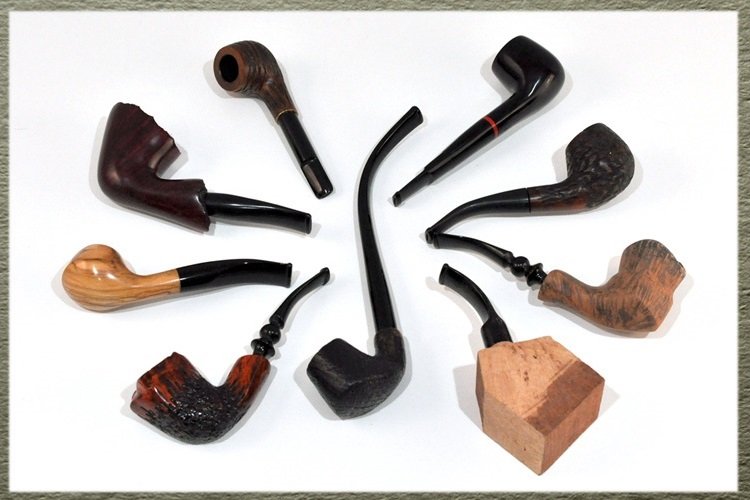
Every high-quality product - whether it be furniture, cars, clothes, or in this case, briar pipes - starts with high-quality materials. Every one. Briar burls come from a variety of different geographic locations but none make it into the briar pipes we sell at Paykoc unless they meet the highest standards of quality. This means the briar has been painstakingly selected for optimal density and grain, then properly cured and dried for more than a year to remove any lingering tannins or other chemicals that could interfere with the taste of the tobacco.
In many ways, however, a briar pipe is only as good as the mouthpiece or stem. Regardless of the quality of briar wood used to make a pipe's bowl, you’ll be unable to enjoy your smoke if your mouthpiece is uncomfortable, poorly mated to the shank, or it doesn't promote a clean, smooth draw.
Briar Pipe Mouthpiece Materials
The mouthpieces on most briar pipes today are made of either vulcanite or acrylic. Here’s a quick look at each material.
Vulcanite Mouthpieces
Vulcanite is a type of rubber that has been vulcanized through the application of heat and sulfur. Vulcanite mouthpieces are renowned for their soft, comfortable grip and over time will conform to the shape of the smoker’s teeth. Vulcanite mouthpieces are also typically thinner than acrylic which attracts many pipe enthusiasts for both aesthetic and practical reasons.
Everything has a downside and vulcanite stems are no exception. Over time, vulcanite can become discolored due to oxidation. This oxidation can also affect the taste of your tobacco, undermining the enjoyability of your smoke. It’s difficult to remove oxidation once it’s set in. Your best bet is to replace the entire mouthpiece.
Acrylic Mouthpiece
Acrylic mouthpieces are available in a wide array of colors. Also known as “lucite” stems they’re much easier to keep clean than vulcanite, won’t oxidize, and are extremely durable. You also don’t have to spend any time worrying that your acrylic mouthpiece will break (as vulcanite stems are known to do).
As with vulcanite, acrylic is not without its downside. Because acrylic tends to be harder than vulcanite, acrylic mouthpieces are sometimes cited as being less comfortable.

Briar Pipe Mouthpiece Styles
Briar pipe mouthpieces come in four basic styles: Saddle, Tapered, Combination, and Military. Each is subject to variation in length, curve, and taper depending on the style of the pipe itself.
Saddle Mouthpiece
The Saddle stem is often preferred by smokers who like to let the pipe rest in their mouth instead of holding it with their hand. It’s typically thinner than a tapered bit which makes it a more comfortable fit for long stretches between your teeth.
Tapered Mouthpiece
The tapered mouthpiece is thicker than the Saddle and can be better for those who tend to chomp down hard on their pipe. The button on a tapered stem is sometimes flared to allow for this more aggressively clamping of the mouthpiece.
Combination Mouthpiece
As the name implies, the combination stem combines aspects of the Saddle and Tapered stems to create a hybrid shape. The top of the mouthpiece typically displays the saddle shape while the bottom is tapered. The actual practical benefits of such a design are open for debate but many pipe lovers prefer the look of the Combination over other designs.
Military Mouthpiece
The Military stem is similar to the Tapered stem but with a tapered mortise or tenon that makes it much easier to remove the stem without causing damage while the pipe is still warm.
Many novice pipe smokers will prefer the Combination mouthpiece simply because it offers the best of both worlds; you can chomp on it like a Tapered stem or hold it comfortably for extended periods between the teeth like a Saddle. In addition, many novice pipe smokers will find it easier to get used to the presence of the pipe by purchasing separate rubber bits which fit over the end of the mouthpiece and provide a deeper, softer surface for your teeth to grasp. Until you perfect a method of holding the pipe that will work for you long term, pipe bits can help ease you into it.
How to Light and Smoke Your Briar Pipes Properly
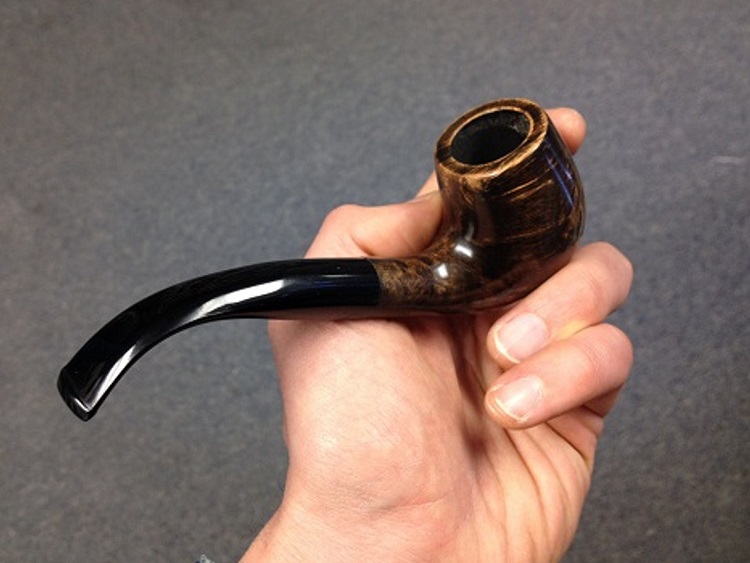
One of the common mistakes inexperienced pipe enthusiasts will make with their new briar pipes is to “over-light” them. They’ll take a common disposable lighter and adjust it to the largest flame setting, then hold that torch over the bowl until the rim is charred and the tobacco is turned to charcoal dust clear through to the bottom. If the goal is to achieve an even, slow burn (and it is), you need to learn and exercise restraint when lighting your pipe. Here are the steps to ensure you achieve the perfect, cool burn.
- First, ditch the disposable lighter and go get yourself an actual pipe lighter. We have many for sale in our online store. If that isn’t a possibility, get yourself a box of wooden matches. Once you have your pipe lighter or wooden matches, spark one up. Hold the flame over the bowl (not too close) and draw air through the pipe slowly and evenly while moving the flame in a gentle circular motion around the bowl until all of the tobacco has been lightly charred.
- Put out the match or lighter then use your pipe tool to gently level the surface of the newly charred tobacco, in the process snuffing out any remaining embers from the initial light. Once everything has been tamped down nice you’re ready for the true light.
- Repeat the process you used for the initial or “char” burn once again. Take slow, even draws while moving the light in a circular motion. Don’t draw too hard or hold the flame in one spot. Keep it up until the entire bowl has a nice, even, red glow to it.
- Now the challenge is to keep the tobacco lit without creating an inferno that will ruin your pipe and the tobacco as well. Take controlled, easy draws with intervals to allow heat to dissipate. If it looks like the burn needs a hand uses a few quicker draws to fire it back up again. The whole process requires practice so be patient.
- Once the tobacco is burning in a controlled, moderate manner sustained by the occasional smooth draw you can truly say your pipe is lit.
Some pipe smokers overdraw constantly, scorching the tobacco and overheating the bowl, sometimes to the point of cracking. Unfortunately, briar pipes don’t come with built-in temperature gauges to help you determine if you’ve achieved just the right temperature; you’ll have to learn by trial and error. And one more thing: drawing too hard can also generate condensation within the bowl that can make it more difficult to keep the tobacco lit, so restraint is the order of the day.
The more you use a briar tobacco pipe, pipe the more ‘cake’ will develop along the walls of its bowl. This carbon residue from the burn process will ultimately help regulate the temperature within the bowl though it will need to be trimmed back on occasion. You’ll undoubtedly overheat your pipe while learning to regulate the burn, but don’t be discouraged. If you’re patient, you’ll get to the point where gentle wisps of smoke are curling lazily skyward, the sign that you’ve achieved a proper burn.
Remember that briar pipes are very different from cigarettes. They’re a sophisticated method of enjoying the taste and aroma of fine tobacco, not for vaporizing them with the heat of a million suns. An even, cool burn is essential to release that flavor and aroma and to promote a relaxing, contemplative mood that should always accompany pipe smoking. Paykoc briar pipes and meerschaum pipes are inspired and hand-crafted with those majestic moments in mind!
Briar Pipe FAQs
A briar pipe is a smoking pipe made from the root burl of the Erica arborea, a type of heather plant. The wood is prized for its heat resistance, durability, and ability to enhance the flavor of tobacco.
With proper care and maintenance, a briar pipe can last for several decades, even a lifetime. The durability and heat-resistance of the briar wood, combined with regular cleaning and careful handling, contributes to the longevity of the pipe.
The flavor of a briar pipe can be affected by the quality and age of the briar wood, the type of tobacco used, and the cleanliness of the pipe. Over time, a layer of cake (carbon residue) forms in the bowl, which can influence the flavor positively by mellowing the smoke.
Seasoning a briar pipe involves gradually building a thin layer of carbon (cake) inside the bowl to protect the wood and enhance the smoking experience. This is done by smoking the pipe with a small amount of tobacco at first and gradually increasing the amount over several sessions.
Quality briar can be identified by examining the grain pattern, weight, and finish of the pipe. High-quality briar often features a tight, even grain with fewer flaws or pits, a lighter weight due to the density of the wood, and a smooth, well-polished finish.
Yes, briar pipes can develop cracks if exposed to extreme temperatures or rapid heating and cooling. Proper care, such as allowing the pipe to cool naturally and not smoking too quickly, can prevent cracking.
An estate briar pipe is a pre-owned pipe that has been refurbished and resold. These pipes can offer great value and character, often being high-quality pieces with unique histories and well-established smoking characteristics.
Yes, briar pipes can improve with age as the wood continues to season, and a layer of cake builds up in the bowl. This seasoning process can enhance the flavor of the smoke, making the pipe more enjoyable to use over time.
Final Thoughts from Our Briar Pipe Wholesalers
Each and every briar pipe we sell at Paykoc Pipes is a carefully handcrafted work of art that will enrich your life and be your welcome companion for many years. The briar pipes we offer are unique creations individually selected by our pipe experts for their beauty, quality, and their low-maintenance durability. Browse our collection and see for yourself the astonishing variety and consistent quality of each one of our briar pipes.

 US Dollars
US Dollars